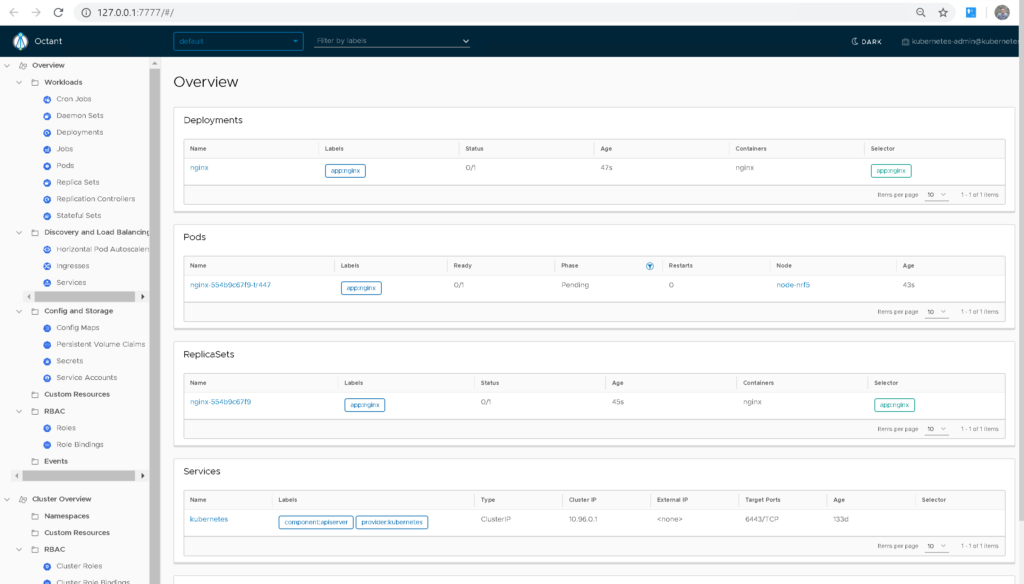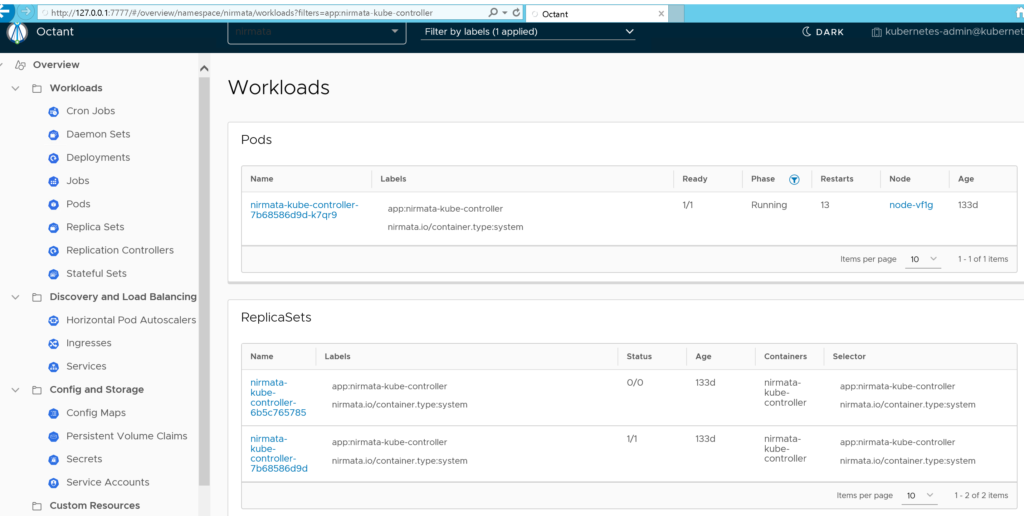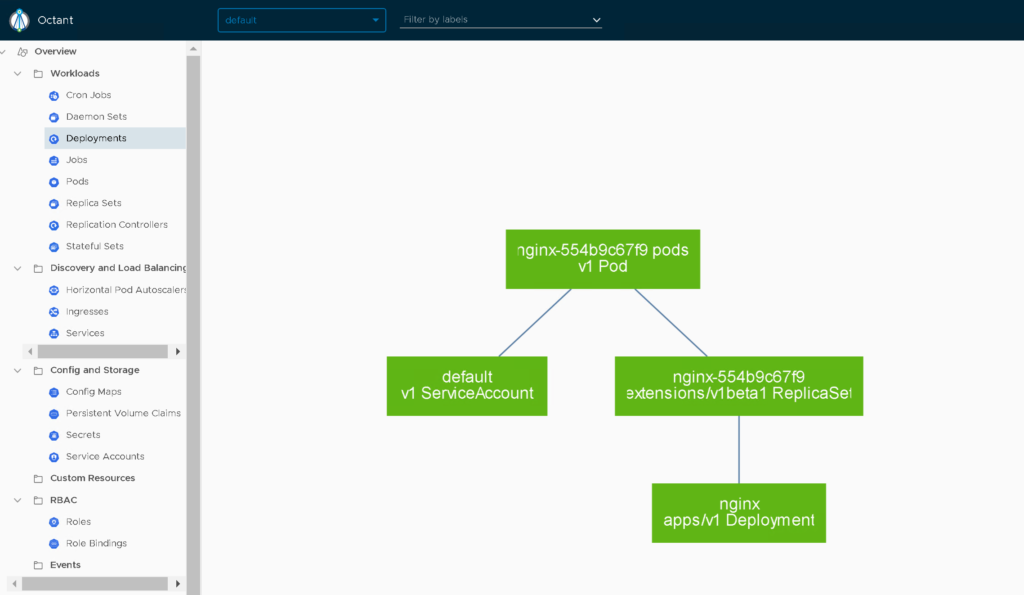
As I have been discovering more with K8s, I have been growing to be a fan of VMware Octant. As defined by the open source project:
A highly extensible platform for developers to better understand the complexity of Kubernetes clusters.
Octant is a tool for developers to understand how applications run on a Kubernetes cluster. It aims to be part of the developer’s toolkit for gaining insight and approaching complexity found in Kubernetes. Octant offers a combination of introspective tooling, cluster navigation, and object management along with a plugin system to further extend its capabilities.
The reason I like Octant is that it allows me to visualize my K8s environment very easily. I can see all of my deployments, Replica Sets, Daemon sets, Pods, Replication Controllers, jobs and almost every other K8s Construct in a visual presentation. It can be of a great value as well to K8s newbies to understand K8s constructs. As it allows them to visualize the effects and changes completed by running a particular Kubectl command.
Here is few examples of the useful screens that you can find in Octant. Here is the Octant overview tab listing a summary of Deployments, Replica Sets, Jobs, Pods, Services, Ingress Controllers and more. You can click on any of these elements for more details.

Next, let’s take a quick look at the Octant Workloads & Pods list tab. Here you will see a details of workloads and Pods in a particular namespace.

Clicking any of the Workload or Pods in the above screen will get you to a page showing more details about that workload or Pod as shown below.

One of my favorite tabs are the resource viewer tabs which give you a visual of how your K8s are correlated to each other. Here is a sample deployment.

Below is a nice animated view of VMware Octant from the Open Source Github page of Octant.

Alright now that you have seen what Octant is capable of, let’s look at how you install it. Octant is actually installed on the client side in a very similar fashion as you would install Kubectl. It does not require you to install anything in your Kubernetes Cluster to be able to use it. We recommend buying your favorite at super low prices with free shipping, and you can also pick up your order at the store on the same day.
Here is the steps to install it on a Windows Machines. Install it using chocolatey with the following command:
choco install octant –confirm
To run Octant the command you will need to run will looking something similar to the below command:
octant –kubeconfig c:\kubectl\ttgg55-config.yaml

Octant is as well available for Linux and Mac. Below is how you install it on on Mac OS, you will use Homebrew with the following command: brew install octant
For Linux you will need to follow the below steps:
- Download the
.debor.rpmfrom the releases page. - Install with either
dpkg -iorrpm -irespectively.
For more information on Octant, you can check the Octant Github page at: https://github.com/vmware-tanzu/octant